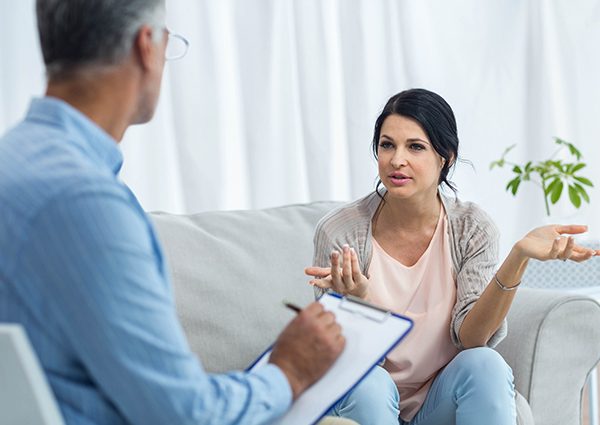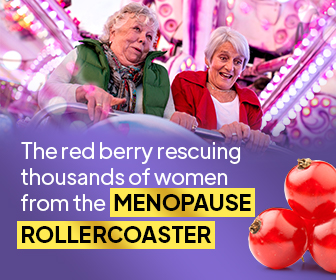Do you feel like you are hearing more and more about the opioid epidemic? Does it seem to be affecting more and more people each year? Is it surprising to you that this is not a typical drug problem? If you really look beneath the surface when it comes to opioid abuse, there is more than meets the eye. It’s surprising just how widespread it is and it’s shocking just how easily it occurs. There’s even more to the story than you may realize, however.
The most surprising part may actually be who the opioid epidemic is affecting. This is not a typical drug problem by any stretch of the imagination — it’s something affecting the middle class, not the poor. This is something that is happening in suburban homes. This is something that is very well known to women. That makes it a very different demographic, and a very different drug problem in general. You may even know somebody who is addicted to this drug yet have no clue about it at all!
The Circumstances of Opioid Addiction

This silent drug problem is sneaking up on us and it’s affecting women of all ages, cultures, and walks of life. It’s time to really understand why the opioid epidemic is so widespread and how it even occurs in the first place. You might think that this is a “bored housewives” type of addiction, but it’s not.
Opioid addiction doesn’t discriminate based upon age, culture, background, or any other demographic. The bigger issue is that these prescription drugs are all too common, and therefore that makes them easily accessible.
There is also science to it, which is to say that there are reasons it occurs why middle-aged women are becoming easily addicted. You have to understand this, so you can gain insight into the actual epidemic. There are so many things to think about and so many factors that have contributed to this epidemic. Though it could affect just about anyone, there are legitimate reasons as to why middle-aged women are the likely target. Understand this, know what to look for and be aware of, and hopefully with the right education this epidemic will stop sooner than later.
The Opioid Epidemic is Real [1]
Sadly, as a culture we tend to turn away from drug problems. There may be several reasons for this, but it’s important to recognize that this is truly an epidemic. This is affecting a great number of people in a significant way. Not only that, but the typical addict has been identified and it is not who you would expect at all. An epidemic is not putting it lightly either — people are dying from abuse and highlighting the problem is the only way to work through it.
This may have you questioning if you know of somebody who is addicted. It happens quite easily and it can also be quite silent, and that may be the hardest part. Women who seemingly have it all fall into this downward spiral. What was once a simple pain medication becomes the enemy. It can take over her life before she even realizes it. This epidemic is costing people their lives, but it’s also breaking apart families and in record-breaking numbers. Education is the first step and something must be done!
There Are More Common Steps Leading Up to This Drug Use
You might wonder how exactly this scenario happens in the first place. How exactly do women become hooked on this class of medications? If a woman has it all, why would she throw it all away for this one drug? Well it typically starts with pain that she is experiencing, and it goes from there.

First and foremost, there are more surgeries and pain management issues happening than ever before. You see things like knee replacement surgeries or recurring injuries happening more in middle-aged women than ever before. This helps to explain the setting for this demographic, and it just goes from there. It’s not that women didn’t get hurt before, but injuries and surgeries are much more common than they used to be.
As if this isn’t enough alarming information, there’s also the fact that more and more of these drugs are being prescribed. The numbers are staggering when you look at the jump in ten years of how many more prescription painkillers are being prescribed. Yes, there is some legitimacy to it and yes women need it, but to what extent? Though there are plenty of great doctors out there who will ask questions and be a bit more conservative, that’s not always the case.
Giving out pain medication makes sense for so many different conditions, but not for every condition. So, the fact that it has become a very common staple contributes to the problem and really helps you to understand how it has occurred. Quite simply put — women get injured, pain medication is given out too freely, and thus the opioid epidemic has been inevitable.
There’s a Science Behind It

You might think this all means that women can’t handle their pain, but this isn’t the case. The truth is that women have more sensory nerves when it comes to pain. So, when they experience it, they feel it hard. Their nerve endings are much more receptive to pain and thus they feel it and experience it differently than men. It’s not that they don’t have a threshold for pain, but it affects their bodies differently than men.
So, consider this in an everyday scenario to help drive the point home. A woman gets hurt perhaps doing the same thing that a man does. Whatever that injury is or however it occurs, her nerves are feeling it firsthand and experiencing it in a different way. She may be down for the count much faster than a man – this is how her body is wired and it has little to do with how she actually tolerates the pain.
She may be incapacitated and yet still go on with her life. This brings us to another point, which is most women don’t necessarily slow down when they get injured or experience pain. They are handling many different tasks and therefore the idea of taking time out to care for themselves is not an option. So, she goes on and may make the injury worse — the end result is that she is in her doctor’s office asking for pain medication. The vicious cycle continues and the epidemic becomes more widespread!
How Does the Evolution Happen?
Getting prescription painkillers isn’t a problem in and of itself. When you think about it, this scenario occurs many times a day in doctor’s offices across the world. So, how does the downward spiral occur? How does it go from a painkiller to help with a specific injury to something much worse and much deeper? It happens slowly and often becomes an issue before the woman even realizes it.
She has pain and the painkiller makes that stop. Simple enough, right? She starts off using the medication for the intended purpose and all goes well. Slowly, however, it turns into something else — the painkiller becomes a means by which to fix other things. Suddenly she is coming to depend on it to function, to make it through her day, to get through a certain activity, or just to get happier. It isn’t something that happens overnight and she certainly isn’t aware of it. This is how the problem goes deeper and deeper without her even recognizing it.
It is about the time that she is taking it without pain that she realizes that there may be an issue. It is about the time that she recognizes that she can’t make it throughout the day that she knows something is wrong. Suddenly, this one pill makes her feel better in a variety of ways. She likely minimizes it and therefore it starts to creep into her everyday life. If that one pill can heal her injury, then it must work for other areas.
How Can Opiod Addiction Be Stopped?
You have undoubtedly heard about the opioid epidemic in the news and it’s not new or slowing down. Yes, this is a huge issue and it’s affecting middle-aged women far too often. Education is one great way to make it stop. Getting people to understand how this problem occurs is a big part of it. The issue though, is that it runs deeper than just that, and education is only a small part of it.
Pain killers being so readily prescribed is another part of the problem. Though there are plenty of great doctors who are mindful of this, there are some that simply don’t pay close enough attention. Considering other options such as physical therapy, acupuncture, or other avenues that do not involve medication is part of it. This takes effort on the part of the doctor, but it also means that the patient commits to it.

A pill is a very simple fix, if you think about it. The reality is that it’s only serving to cover up the symptoms or help to temporarily fix the pain. It is never intended to be a lifelong dependence and that’s where the insight must occur. The other issue is that women can easily get their hands on this medication, often without a prescription. There must be more careful attention paid to how this is given out and who can gain access to it.
Though the opioid epidemic may be in the news all the time, it is often the people you least suspect. Middle-aged women are the perfect candidate based upon their lifestyle, their circumstances, their pain issues, their access to medication, and to their desire to multitask and function even with an injury. Therefore the only way to get it to pay closer attention to it and work through these issues. Then and only then will it stop or lose its current momentum in the first place.
Fun Fact: The amount of prescription opioids sold to pharmacies, hospitals, and doctor’s offices nearly quadrupled from 1999 to 2010.
Summary: What Should You Do Now?
The fact that this epidemic is happening right before our very eyes is quite telling. It shows that anybody can become addicted at any time. Middle-aged women just so happen to be the most common abusers, and this is what makes it a rather difficult issue to digest. If women who seemingly have it all and balance everything can fall into this trap, then is anyone safe?
You have to be aware of the medications that are prescribed to you and use them as they are intended to be utilized. You have to recognize that sometimes long term use of any medication can result in dire consequences. Being educated and proactive is the very best way to work through this issue and ensure that the epidemic no longer rules this segment of the population.

Action Steps: Tips for Working Through and Avoiding This Common Problem
- Be aware of how this epidemic occurs and snowballs
- Take inventory of what medication you are prescribed and how they are to be used
- Take any medication only in the way it is intended to be used
- Ask for help if you feel you are becoming dependent upon the medication
Though this opioid epidemic can be a very scary thing at times, it doesn’t have to take over your life. Recognize that this is a very different target audience and be on the lookout for the signs of a problem and work through it quickly.
Use your medication only as it intended and consider options besides medicine. Having insight into this whole epidemic can help you to avoid becoming part of the problem — this is an instance where knowledge is truly a powerful thing!








